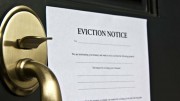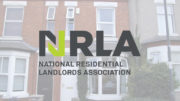Official figures published this week show that 85 per cent of new homes in England and Wales now qualify for one of the two highest energy efficient band ratings.
Energy Performance Certificates are mandatory for all domestic buildings, old or new, owner-occupied or rented.
‘This Government acted decisively to keep the housing market open and operating safely during the pandemic. We are now seeing the benefit as these latest figures indicate an increase in supply of green homes’, said Housing Secretary Robert Jenrick.
Not only do we want to build back better, we want to make sure homes across the nation are fit for the future, better for the environment and more affordable for home-owners to heat. Our environmental targets will be fair and affordable to everyone.’
But the National Residential Landlords Association has complained that not enough is being done to support improvement of energy efficiency in rented homes.
Only one in twenty private rented households have received Government help to fund energy efficiency measures ‘despite having the greatest need’, it pointed out this week.
‘Although more of those classed as fuel-poor live in the sector, private rented households received only half of the help given to those in the social sector’.
According to the English Housing Survey, a third of private rented sector housing was built before 1919, said NRLA. ‘This is the hardest to treat and accounts for a larger proportion of the sector than for any other housing tenure. Across England’s entire housing stock, 84 per cent of properties built before 1919 had an energy rating or D or worse.
‘With 62 per cent of private rented homes having an energy rating of D or below this will largely account for why 37 per cent of all households classed as fuel-poor are in the private rented sector compared to 23 per cent in the social sector.
‘Data shows that 97 per cent of private rented properties with an energy rating of D or lower could reach C or better’.
The Government wants all new private rented tenancies agreed from 1 April 2025 to be in properties with an energy performance rating of C or better. And according to its own figures, it would cost an average of over £7,500 to bring rental properties needing it to an energy rating of at least C.
But, said NRLA, ‘this makes the Government’s ambitions to improve the energy efficiency of the rental housing stock a pipe dream when the average net annual rental income for a private landlord is less than £4,500’.
It has called for a bespoke financial package to support the improvements that are needed, including a right to offset the cost of energy efficiency improvements against income in the way that repairs and maintenance costs are allowed as tax deduction.
‘We all want to see energy efficient rental homes. They cut bills for tenants, make homes more attractive to potential renters and help the country to achieve its net zero commitment. The Chancellor needs to develop a financial support package that works for landlords and tenants’, said NRLA chief executive Ben Beadle.







